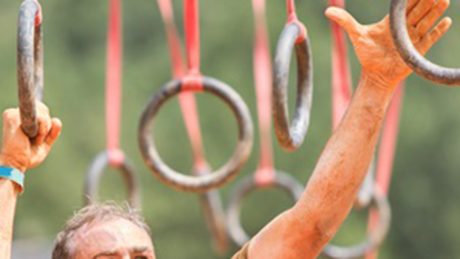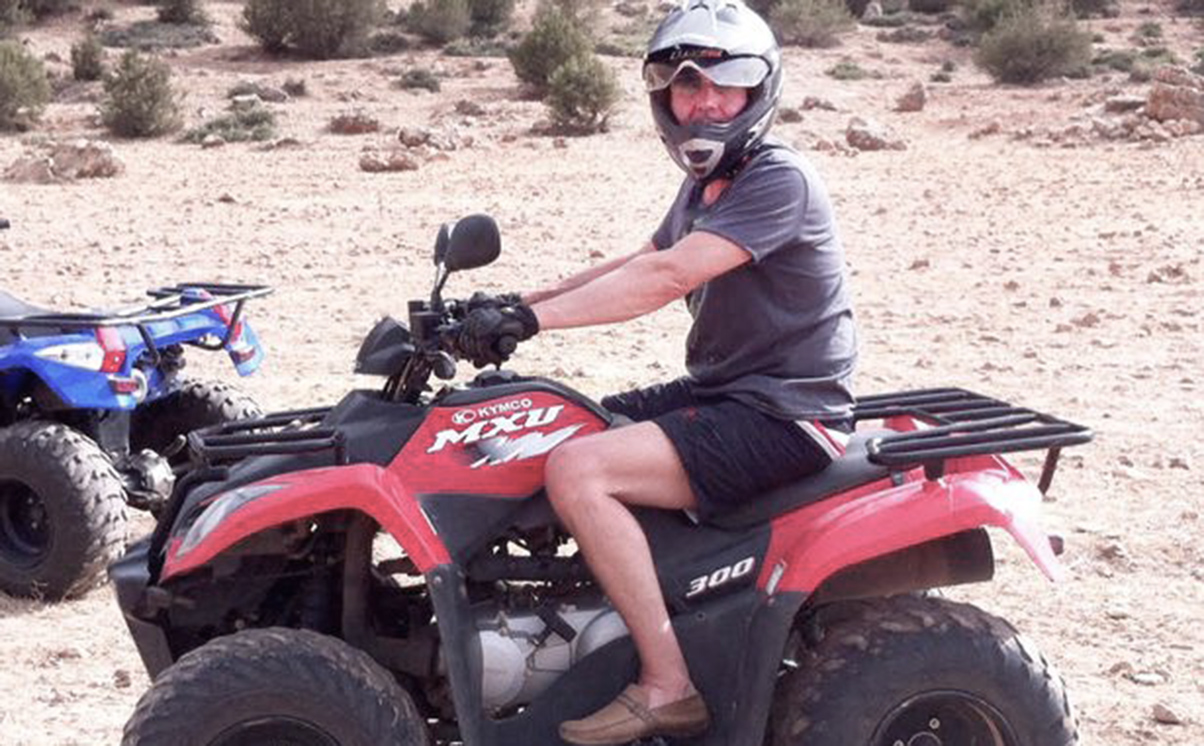Any adventure activity comes with a fine balance between being fun and challenging on the one hand and having the hazards mitigated through safety measures, including good instruction, on the other. Legal liability can result if that balance is not struck but turns on the specifics of each case, as James Griffin explains.
Whether it be extreme obstacle course fun runs, ski-doo racing, quad bike tours or other challenges to the human body and spirit, adventure activities have rocketed in popularity in recent times. Before the pandemic, such events regularly took place across the country. The recent case of Harrison v Intuitive Business Consultants and Big Bang Promotions considers the balance between instruction and risk in these activities. It also examines the common use of liability waivers at such events and the importance of good witness evidence.
The Bear Grylls Survival Race
The claimant in Harrison was a participant in an event marketed as the “Bear Grylls Survival Race”. This was a themed obstacle course comprising a mixture of obstacles and survival challenges, held over either a 5km or 10km route. The obstacle course was designed and marketed as suitable for people of all abilities, with events being held across the country.
Ms Harrison, a 58 year old former accountant, had never run an adventure race previously. She was however a regular gym attendee, and even completed gym training with her personal trainer recreating some of the potential obstacles she may face on the day of the Bear Grylls Survival Race. Both Ms Harrison and her personal trainer gave evidence that she was very fit and well equipped to deal with the challenge presented by the obstacle course.
On the day, in October 2016, whilst attempting to negotiate an obstacle known as “The Jungle”, she fell, suffering serious shoulder and right leg injuries.
Presented as one of four flagship obstacles, The Jungle was essentially a set of monkey rings around two metres high. Participants had to climb a small scaffold onto a platform before traversing around eight or nine rings to reach another platform at the end of the obstacle. It was not in dispute that this obstacle was one of the more challenging in the race and one from which a significant number of racers fell. In fact, serious injuries had been sustained by two participants on The Jungle at two previous Bear Grylls Survival Races held earlier in the year.
Waiving your rights away?
As is common for adventure activities, the claimant was required to sign a waiver form provided by the event organisers before participating in the event. The waiver read:
“A risk of injury and/or death from the activities involved in the Bear Grylls Survival Race … is significant including, but not limited to the following: … strains … fractures … While particular rules, equipment, and personal discipline may reduce this risk, the risk of serious injury does exist … I knowingly and freely assume all such risks, both known and unknown, even if arising from the negligence of the Releases or others and assume full responsibility for my participation.”
These types of liability waivers, while usually full of legalese and forthright language, are invariably unenforceable. As His Honour Judge Freedman pointed out in his judgment, it is trite law that liability cannot be excluded where personal injury has been caused as a result of negligence on the part of the organiser.
While organisers of extreme events such as the Bear Grylls Survival Race may attempt to rely on signed waivers when a complaint is first raised, such waivers do not hold water in excluding liability merely through signing the form before taking part. What the waiver does, at least, is put a participant on notice that there is a risk of serious injury. Therefore, it would be difficult for a participant in such an activity to argue that they were completely unaware of the risk of injury.
The balance of risk and reward
In his judgment, His Honour Judge Freedman noted that “a balance has to be struck between an obstacle course which is testing, challenging and demanding and one which is not unduly hazardous”.
The difficult questions the judge had to deal with in this case, as in all similar events and excursions, were the level of duty to be imposed on the organiser and whether they breached it?
A risk assessment of the course was carried out before the event. To reduce the risk of an accident occurring, the organisers arranged for two marshals to stand on the platform at the start of the obstacle. Their role was to brief participants that the safest method of negotiating the obstacle was to sit on the edge of the platform and reach for the first ring from a seated, rather than standing, position.
In addition, a heel bar was installed on the edge of the platform and straw was laid across the ground to soften any landing, with volunteers redistributing the straw intermittently to ensure suitable coverage. It was common ground among the parties’ experts that departing from a seated position reduced the risk of injury compared with setting off from a standing position.
In this case, there was significant focus on two points:
- What was the level of duty owed by the race organisers to ensure participants left the platform in a seated position and did the organisers discharge this duty?
- Did the organiser have a duty to ensure a reasonably safe landing surface if a participant fell from the monkey rings?
His Honour Judge Freedman determined that the answer to both questions was yes, but in relation to 1, the issue at trial became how robust must this instruction be?
The judge concluded that the duty did not extend to expressly mandating that participants adopt a seated position; the event organiser’s duty was merely to give instruction to that effect.
Furthermore, it was sufficient to repeat the instructions periodically to new participants as they approached the obstacle. The judge said:
“The defendants were obliged to tender such advice or instruction, [but] it does not follow that they were required to speak, individually, to each participant and to satisfy themselves that each individual had received the appropriate instruction. To give such specific instruction to each individual was not reasonably practicable, bearing in mind the numbers involved and the circumstances surrounding the event… Clearly, the intention had to be that each individual would be alerted to the instruction and advice which was being offered but there was no requirement for the marshals to satisfy themselves that in each and every case, the instruction had been heard.”
To that end, Ms Harrison and other participants gave evidence asserting that no instruction was given by anyone on the course as to how to disembark from the platform onto the rings safely. The defendant, seemingly late in the proceedings, produced witness evidence from one of the volunteer marshals who had been standing on the platform while Ms Harrison was on the course. The witness acknowledged that the marshals on the platform did not speak directly to every single participant but that the instruction was periodically being shouted to participants as they approached the platform.
On considering the witnesses’ disputed factual evidence, the judge found favour in the defendant’s witness account, saying the defendant had discharged its duty to the participants on the course.
Notably, he said signage advising participants on how to negotiate the obstacle was not required.
The importance of witness evidence in this and other cases
As ever in litigation, where there is a factual dispute, the value of relevant and straightforward witness evidence cannot be understated. This case turned on the witness evidence provided by the volunteer working that day, a witness the judge described as “…most impressive… She was almost disarming in her frankness. Where she was unable to recall matters, she candidly accepted that such was the case. She was manifestly doing her very best to assist the court in her recollections of what occurred. Further, I formed the view that she was entirely open-handed and straightforward in her evidence; and that she had no axe to grind. She is also plainly a very conscientious and capable individual; she is now a junior doctor working in a paediatric unit.”
Stewarts has undertaken many cases involving serious injury and death resulting from a wide range of adventure activities. In one matter, Stewarts represented a claimant who suffered life-changing spinal injuries while on a ski-doo excursion.
As in Harrison, much turned on what instruction was being provided to participants, with the claimant and other participants on the excursion attesting that insufficient instruction was provided. The defendant produced several witnesses who gave evidence of appropriate instructions being provided by the instructor in past excursions. However, none of the witnesses was present on the day of the accident and could not comment on whether sufficient instruction was provided on the day in question. The judge favoured the evidence from the claimant and her fellow witnesses from the group on the day.
Another matter in which Stewarts successfully secured compensation for a client was the tragic case of a man who suffered fatal injuries following a quad bike excursion in Morocco. In this case, along with being provided with a helmet several sizes too large, witness evidence established that the non-English speaking guide running the trip relied on hand signals alone to guide the victim. As a result, he failed to give proper safety instructions or warn of approaching dangerous terrain. This grossly insufficient instruction led to the vehicle going off the side of a mountainous dirt track, with the tourist suffering fatal injuries. Once again, the quality of the witness evidence available was one of the reasons that led to the claim being settled without the family having to go to court.
Conclusions
Harrison confirms the court is keen to strike a balance in the duty of care placed on adventure activity organisers and the level of instruction and intervention they are required to provide. For those taking part in such activities, there are some key points to take away:
Liability waivers: Signing a waiver before participation does not automatically defeat a claim for any injury sustained. In many cases, such waivers prove irrelevant to the court’s decision, which instead tends to focus on whether the equipment and/or guidance was appropriate. However, such waivers make it harder for participants to claim they were unaware that the activity carries inherent risks of serious injury.
Gut instinct: Try and check the credentials of the organisers before you sign up. Plus, if on the day you have doubts about the safety of the activity, the equipment, the instructor or the instruction, pause to think twice and pull out if your gut tells you the thrill is not worth the risks.
Witness evidence: If there is a factual dispute about the quality of instruction provided by the event organiser, good witness evidence from you and others who participated in the event is extremely important.
Contemporaneous videos and photos: Any video and photographic evidence of the event being run is immensely helpful, as it will show how the event was managed on the day and may cut through much of the factual disputes between witnesses.
You can find further information regarding our expertise, experience and team on our International Injury page.
If you require assistance from our team, please contact us or alternatively request a call back from one of our lawyers by submitting this form.
Subscribe – In order to receive our news straight to your inbox, subscribe here. Our newsletters are sent no more than once a month.






